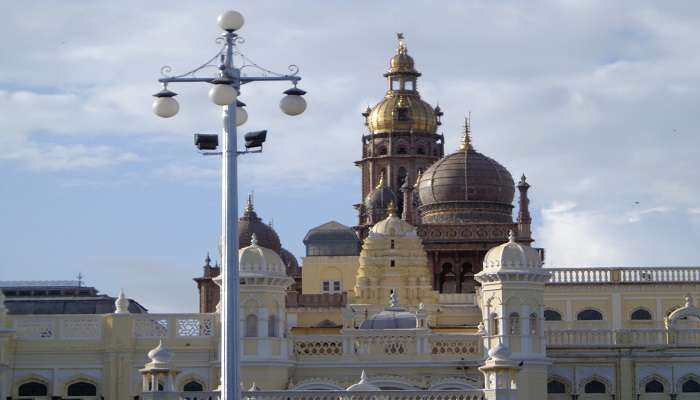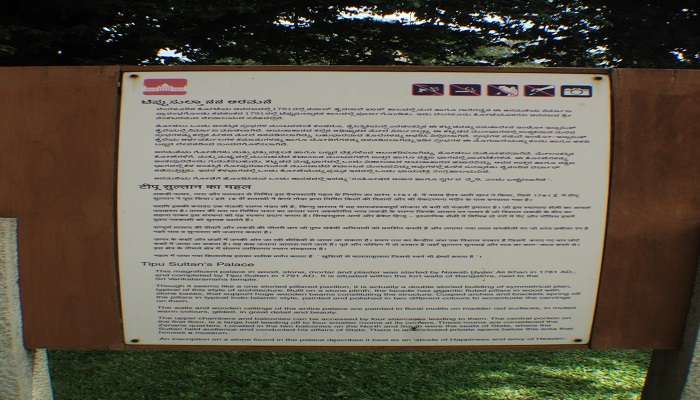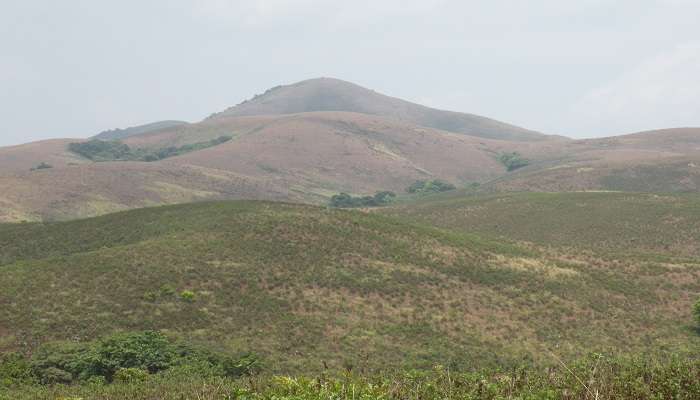Discover Tipu Sultan’s Palace Bangalore In 2026 A Historical Jewel To Experience

Located amid the city, the Tipu Sultan’s Palace Bangalore is one of the iconic tourist places in the country. This place is a true testament to the architectural marvel of the 18th century. Mysore is known for its brilliant palaces, and this one is no exception. However, the palace bestows not just an architectural essence but also a historical and cultural one.
History Of Tipu Sultan’s Palace Bangalore

Throughout his reign, Tipu Sultan built many palaces in Bangalore and Mysore. The Tipu Sultan’s Palace Bangalore was built in 1791 and is a beautiful example of Indo-Islamic architecture. The complex served as the summer house of Tipu Sultan who was then the king of Mysore, in southern India. Pure teak wood makes up the building, which also features exquisitely carved balconies, arches and pillars. The palace edifice served as the secretariat for the British Administration following the death of Tipu Sultan. In present-day, the palace is a well-liked tourist destination in Bengaluru for moments that are picture-perfect. During Tipu’s reign, the Summer Palace, which is situated in modern-day Chamarajpet, was finished in 1791. This vacation home served as the hub of the kingdom’s administrative operations during this period.
Also Read: Domlur
Places To Visit Near The Palace
Here are some of the most in interesting places you may visit while touring the iconic Tipu Sultan’s Palace:
1. Somanathapura Temple

The Somanathapura Temple, also called the Chennakeshava Temple, is a bold example of Hoysala architecture and is situated in Mysuru, Karnataka, India. Mysuru was originally known as Mysore. Established in the Thirteenth Century by Soma, a Dandanayaka (commander), this temple honours Lord Chennakeshava, a manifestation of Lord Vishnu, and was built under the patronage of Hoysala King Narasimha III. Its symmetrical design, soapstone architecture, and elaborately carved sculptures demonstrate the extraordinary skill and inventiveness of the craftsmen of the time. With its intricate friezes and panels that tell tales from Hindu epics, the temple is a monument to the religious zeal and artistry that grew during the Hoysala era.
Timings: 09:00 AM – 05:30 PM
Entry Fee: INR 15 for adults and free for children under 18 years
2. Mysore Palace

A good option if you consider a variety of palaces, is to take a detour from Tipu Sultan’s Palace in Bangalore to Mysore Palace. Located in Mysore, Karnataka, India, Mysore Palace, sometimes called Ambavilas Palace, is a historical palace and royal residence. One of India’s most magnificent and recognizable palaces, it is renowned for its Indo-Saracenic architecture, which combines Gothic, Rajput, Hindu, and Muslim elements. After the former palace was destroyed by fire, the current building was started in 1897 and finished in 1912. The Wadiyar Maharajas of the princely state of Mysore lived there. The palace, which faces the Chamundi Hills to the east, is a popular destination during Dasara, when it is brilliantly lit up.
Timings: 10:00 AM – 5:30 PM
Entry Fee: INR 70 for adults and INR 30 for children
Related Post: Vidhana Soudha
3. Brahmagiri Peak

For those who are not very much into palaces and halls, there is a great option near Tipu Sultan’s Palace in Bangalore. Located in the Brahmagiri Wildlife Sanctuary in Coorg, Karnataka, India, Brahmagiri Peak is part of the Western Ghats mountain range. It towers boldly 1,608 meters above sea level, its surroundings lush and verdant and its vistas stunning. Numerous endangered species of plants and animals can be found in the sanctuary. As the falls are revered, the walk usually starts at the Iruppu Falls, which combines scenic beauty with a spiritual experience. Before arriving at the foggy peak, hikers pass through grasslands, shola trees, and multiple streams along the trail.
Timings: 6:00 AM – 6:00 PM
Entry Fee: Free
4. Wayanad Wildlife Sanctuary

The Wayanad Wildlife Sanctuary is a lush area in Wayanad, Kerala, India, known for its abundant biodiversity. It is located in the Western Ghats. It is a part of the Nilgiri Biosphere Reserve and the second-largest wildlife sanctuary in Kerala, having been established in 1973. The east of the sanctuary is called Muthanga, and the north is called Tholpetty. Wildlife fans can witness Indian bison, elephants, tigers, and leopards there, making it a sanctuary. From semi-evergreen grasslands to deep, damp deciduous forests, the vegetation is diverse. The indigenous groups of the sanctuary, such as the Paniyas, Kurumas, and Adiyans, contribute to its cultural fabric in addition to the animals.
Timings: 07:00 AM – 10:00 AM and 02:00 PM – 05:30 PM
Entry Fee: INR 110 for adults and INR 40 for children
Related Post: Iskon Temple Bangalore
Ticket Pricings & How To Reach The Palace

When visiting the Tipu Sultan’s Palace Bangalore, you must adhere to the timings and rules. The Tipu’s Summer Palace is open Monday through Friday from 10 AM to 6 PM and on Sundays from 8.30 AM to 5.30 PM. Tipu Sultan Palace has a minimal admission fee of Rs. 20/- for Indian citizens. However, foreign visitors must pay Rs. 200/-per person for admission.
Getting here is quite simple. The cheapest way to get to the palace is to take a bus from Bangalore and travel to the palace. You will only have to pay INR 15 for a bus ticket. Bangalore has excellent metro line connectivity. Majestic, which is located on both the purple and green lines, is the closest metro station to Tipu Sultan Palace. Alternatively, the simplest but slightly priciest option is to hire a private taxicab. The city’s buses, which are operated by the state, provide another option for getting around.
You May Also Like To Read: Hotels In Bangalore
The Tipu Sultan’s Palace Bangalore offers a peek into the royal lifestyle of India’s most formidable rulers. The palace is a sure-shot way to enlighten yourself with the bravery of our heroes. It transports you back to the time of royalty when tales of valour were common. If you want to experience it with your own eyes, book your trip to Bangalore and immerse yourself in the cultural richness of Tipu Sultan’s Palace Bangalore.
For our editorial codes of conduct and copyright disclaimer, please click here.
Cover Image Credit: Sourabh 7 Jain for Wikimedia Commons
Frequently Asked Questions About Tipu Sultan’s Palace Bangalore
What is unique about Tipu Sultan’s Palace Bangalore?
The Tipu Sultan’s Palace Bangalore is a perfect example of the age-old yet elegant Islamic and Hindu architectural traditions. It also shows how both of the religions coexisted. The palace shows exemplary features with detailed woodwork and a unique flower theme. The lovely courtyard outdoors is encircled with pillars and has elaborate carvings. Interestingly, the palace is built with teak wood and features balconies, pillars and arches.
Why was Tipu Sultan so famous?
Tipu Sultan was not only a brave ruler of his time but also waged war against the Britishers during their rule in India. He was given the title of 'Tiger of Mysore' or Sher-e-Mysore, Due to his courage. He was the Muslim king of the Kingdom of Mysore in South India. He was the first one to introduce rocket artillery in India.
When was the Tipu Sultan’s Palace Bangalore constructed?
The palace was completely built in the year 1791.
How large is Bangalore Palace?
The colossal Bangalore palace spans across 45000 square feet.
What are the charges for visiting Tipu Sultan’s Palace in Bangalore?
Indian citizens must pay an entrance fee of Rs. 20, while foreign guests must pay Rs. 200 (US$2.50). Besides this, there are nominal charges you need to pay for travelling from Bangalore by metro or bus. The auto rickshaws from the metro station take somewhere between Rs. 10 to Rs. 20.
People Also Read:
Neemrana Fort Palace Kilimanoor Palace Padmanabhapuram Palace

We all have to begin somewhere. This is where I start and I hope that my writings encourage you to begin. To new beginnings and conquering new places!











